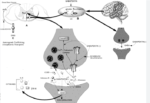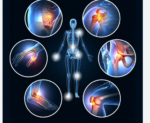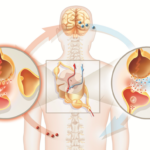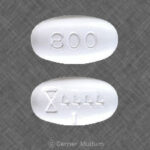Nociceptive Pain is the result of an injury to part of the body such as a muscle or a bone. When one of these is damaged, pain sensors (nociceptors) send pain messages to the brain along the peripheral nerves and the spinal cord. The pain feels as if it is in one place, constant and often aches or throbs.
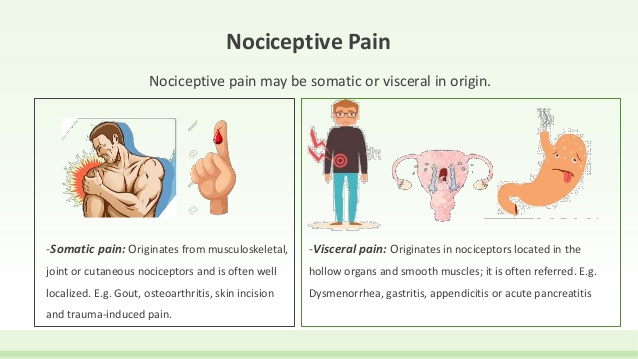
Nociceptive pain from the intestines tends to come and go and feels as if it is in more than one place.
When the damage heals, nociceptive pain usually goes away – arthritis being an exception.
Examples: Broken bones, burns, bumps, bruises, a blocked intestine and inflammation (for example from an infection.
What is Nociceptive Pain?
Nociceptive pain is a type of pain that arises from the activation of nociceptors, which are specialized sensory receptors responsible for detecting potentially harmful or noxious stimuli, such as tissue damage, heat, cold, or pressure. Nociceptors are found throughout the body in skin, muscles, joints, and internal organs.
Nociceptive pain can be further categorized into two primary subtypes:
- Somatic Nociceptive Pain: This type of pain originates from the activation of nociceptors in the skin, muscles, and joints. It is typically well-localized and described as a sharp, aching, or throbbing pain. Common examples of somatic nociceptive pain include the pain from a cut, burn, or bone fracture.
- Visceral Nociceptive Pain: Visceral pain arises from the activation of nociceptors in the internal organs, such as the stomach, intestines, or liver. Visceral pain is often described as a deep, dull, or cramping sensation and can be more challenging to localize. It may be referred, meaning that the pain is felt in an area different from where the underlying problem is located. For example, pain from a heart attack may be felt as left arm pain or chest pain.
Nociceptive pain serves a protective function by alerting the body to potential harm or injury. When tissue damage or injury occurs, nociceptors send signals to the brain to elicit a pain response. This pain response encourages the individual to take protective actions, such as withdrawing from a painful stimulus, avoiding further injury, and seeking medical attention if necessary.
What Causes Nociceptive Pain?
Examples of types of injuries that can cause nociceptive pain include:
- Bruises
- Burns
- Cuts
- Fractures or broken bones
- Pain caused by repetitive or muscle overuse
- Pain caused by joint damage, such as arthritis or sprains
It can also be caused by an internal problem, such as cancer or a tumor.
Nociceptive Pain and Neuropathic Pain
Nociceptive pain is different from neuropathic pain because nociceptive pain develops in response to a specific stimulus to the body, but neuropathic pain doesn’t. Neuropathic pain is pain that comes from damage to the nerves or nervous system. It causes a shooting and burning type of pain or numbness and tingling. People can even have neuropathic pain when the limb they are feeling pain in isn’t there. Phantom limb syndrome is an example of this.
Neuropathic pain can be caused by many different conditions, including:
- Alcoholism
- Diabetes
- HIV or AIDS
- Multiple sclerosis
- Joint problems in the spine
It can also happen as a side effect of chemotherapy.
Nociceptive Pain and Acute Pain
Nociceptive pain and acute pain are related concepts, but they are not synonymous. Acute pain is a broader term that encompasses various types of pain, including nociceptive pain. Here’s how they relate to each other:
- Acute Pain: Acute pain refers to a type of pain that is typically of sudden onset and short duration. It serves as a warning signal to the body that something is wrong and requires attention. Acute pain can result from a variety of causes, such as injuries, surgical procedures, medical conditions, or other noxious stimuli. It can include nociceptive pain, as well as other types of pain like inflammatory pain, neuropathic pain, or functional pain.
- Nociceptive Pain: Nociceptive pain, on the other hand, is a specific category of acute pain. It arises from the activation of nociceptors, specialized sensory receptors that respond to noxious or potentially harmful stimuli. Nociceptors are located throughout the body, in tissues like skin, muscles, joints, and internal organs. Nociceptive pain is the body’s response to tissue damage or injury, such as that caused by a cut, burn, fracture, or other traumatic event. It is a protective mechanism to alert the body to potential harm and promote behaviors like withdrawal from the painful stimulus.
In summary, acute pain is a general term used to describe pain of sudden onset and short duration, while nociceptive pain is a specific type of acute pain that results from the activation of nociceptors in response to tissue damage or injury. Other types of acute pain, like inflammatory pain (resulting from inflammation), neuropathic pain (caused by nerve dysfunction), or functional pain (associated with normal bodily functions), can also fall under the category of acute pain. The specific type of acute pain depends on the underlying cause and the mechanisms at play.
How Nociceptive Pain is Treated?
Nociceptive pain is typically treated by addressing the underlying cause of the pain and managing the pain itself. The treatment approach may involve a combination of the following strategies:
- Treating the Underlying Cause:
- If the pain is the result of an injury, wound, or a specific medical condition, treatment may focus on addressing that cause. For example, a broken bone may require realignment and immobilization, while an infected wound may need antibiotic therapy.
- Medications:
- Nonsteroidal Anti-Inflammatory Drugs (NSAIDs): These medications, such as ibuprofen or naproxen, are commonly used to reduce inflammation and relieve nociceptive pain. They work by blocking the production of pain-inducing chemicals called prostaglandins.
- Acetaminophen: This pain reliever helps reduce pain and fever but does not have anti-inflammatory properties. It is often used for mild to moderate nociceptive pain.
- Opioid Medications: In cases of severe nociceptive pain that does not respond well to other treatments, opioid pain relievers like morphine or oxycodone may be prescribed. These drugs should be used with caution and under medical supervision due to their potential for addiction and side effects.
- Physical Therapy and Rehabilitation:
- For musculoskeletal injuries and conditions, physical therapy can be beneficial in restoring normal function and reducing pain. Therapeutic exercises, stretches, and modalities like heat or cold therapy may be used.
- Rest and Immobilization:
- In cases of acute injuries or conditions that cause nociceptive pain, rest and immobilization can be crucial for the healing process. Splints, casts, or braces may be used to stabilize affected areas.
- Local Interventions:
- In some cases, local interventions like corticosteroid injections can be administered to reduce inflammation and relieve nociceptive pain in specific joints or regions.
- R.I.C.E. Protocol: Rest, Ice, Compression, and Elevation (R.I.C.E.) can be useful for acute injuries to reduce swelling and pain. Applying ice, compressing the area, and elevating it above heart level can help.
- Over-the-Counter Topical Analgesics: Creams, gels, or patches containing pain-relieving ingredients, such as lidocaine or capsaicin, can be applied topically to the painful area.
- Patient Education: Educating patients about the nature of their pain, the expected course of recovery, and strategies for self-care can help manage nociceptive pain and improve overall outcomes.
- Behavioral and Psychological Therapies: In some cases, interventions like cognitive-behavioral therapy (CBT) can be helpful in managing pain and improving coping strategies.
It’s essential to have a healthcare provider assess and diagnose the underlying cause of nociceptive pain to develop an appropriate treatment plan. Pain management should be individualized, and treatment may vary depending on the specific cause and severity of the pain. For chronic nociceptive pain, a multidisciplinary approach involving healthcare providers, physical therapists, and pain specialists may be necessary to achieve the best outcomes.
Pain Medications, Pain Relief, and Pain Management

